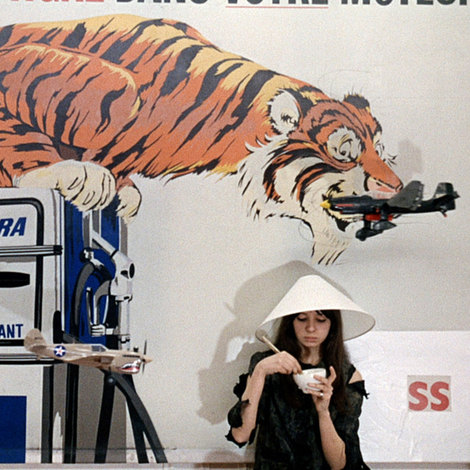When Nozomu Miyajima traveled to Switzerland for the Mountain Cheese Olympics, in 2004, no one really considered him a credible threat. But the little-known Japanese dairy farmer was armed with a secret weapon. Inside Miyajima’s suitcase was a fresh batch of sakura, a creamy soft cheese delicately flavored with Japan’s national flower, the cherry blossom. Measuring less than three inches across, his lilliputian creation stunned the judges and romped past its French, Swiss, and Italian rivals to gold—a first for his nation.
To most people, Japanese cheese sounds like a misnomer. And historically, they’d be correct. A century ago, the average amount of cheese consumed per person each year weighed less than a raisin. However, a quiet revolution is taking place as artisanal producers concoct new cheeses with the same obsessive quest for perfection that has become a signature of Japanese craft, begging the question: Could Japanese cheese become the next Japanese whiskey?

Miyajima’s farm, Kyodo Gakusha Shintoku, lies at the foothills of a volcano range in the middle of the island of Hokkaido. He’s been making cheese there since the late 1980s—after completing a dairy-sciences degree at the University of Wisconsin, he was rewarded with a parcel of land by the local Japanese government in return for employing locals with disabilities (a practice he still observes today).
His methods are entirely biodynamic, focusing on ecology and ethics, as well as Shintoism’s reverence for nature spirits. Like fine wines, his Camembert, Gouda, and raclette are created in harmony with the local terroir. They’re gently washed in naturally filtered hot springs or locally made sake, and fragranced with dusted myrtle, pickled flowers, or fresh bamboo leaves.
“While eighth-century texts by Buddhist monks compare the taste of cheese to enlightenment, dairy wasn’t consumed in any real quantity in Japan until the United States’ occupation, when every schoolchild was given a carton of milk for lunch,” Malory Lane, an American who is the only well-known international expert on artisanal Japanese cheese, says. “The whole movement then began when they became adults, in the 1970s and 1980s. A second wave occurred around the time of the millennium.”

She cites Masanori Matsubara, the owner of Mirasaka Fromage, as an example of the latter. Located in the meadows of Hiroshima Prefecture, he lets his small herd of goats and cows casually graze free-range on a diet of foraged buds and shoots in spring, grasses in summer, chestnuts and mushrooms in fall, and bamboo in winter. He makes an impassioned case for this stress-free lifestyle being good for the animals, for himself, and for the cheese.
The Damascene moment for Matsubara’s methods happened on a dairy farm in Australia’s outback. While driving the carcass of an overworked cow to its grave, he became surrounded by the animal’s companions, who began crying for their former colleague. Matsubara’s vision, in his own words, was to create cheese that “reflects the individuality of the animals and tells you a story in your mind as soon as you taste it.” Some of his star outcomes include Fuji Sumi, a light goat cheese sculpted to resemble sacred Mount Fuji and coated in charcoal, and Heidi, a nutty blue.

Then there is Akashōbin, which translates to Ruddy Kingfisher, a Mont d’Or–style cheese made from the milk of his Brown Swiss cows that’s wrapped in hand-peeled hinoki-cypress bark to give it a distinct woody aroma. The recipe took a decade of fine-tuning as Matsuba tried to create the ultimate balance of the animals’ seasonal diet, but his conviction paid off—last fall, Akashōbin won Super Gold at the World Cheese Awards in Norway.
Others in Japan, such as Chiyo Shibata, approach artisanal cheese more like a science. After falling in love with cheese on a family vacation to Paris, she studied microbiology and fermentation at Tokyo University of Agriculture, and now runs Fromage Sen from a 120-year-old wooden barn 90 minutes outside Tokyo.
Shibata invites members of the public to watch her make around 15 styles of cheese with fresh raw milk from a neighbor’s farm and locally sourced sea salt, sake lees, and sansho pepper. Crucially, with the aid of petri dishes, she also lectures on the importance of bacteria’s role in the process.
In 2017, Shibata became the first female cheese-maker to be spotlighted with a prestigious award from Japan’s Ministry of Agriculture. More recently, she’s been followed by an American documentary-film crew.

Lane says there are now more than 300 boutique-cheese producers in Japan, and that many of them offer a lifeline to rural communities struggling with aging populations and high unemployment. She also notes that as the average Japanese person now consumes more than 2,000 times the cheese they did in 1900, specialty products are increasingly in demand, leaving little room for export. Currently, it’s virtually impossible to eat Japanese cheese beyond the country’s borders.
Lane thinks that will change in due course. “I wouldn’t be surprised if it takes another decade for Japanese cheese to become widely known,” she says. “It will get there eventually. Like whiskey, jeans, and trains, it’s a great example of Japan taking something that culturally is very foreign, then making it better.”
And in case you’re wondering, yes, it’s eaten with chopsticks.
Harry Seymour is a London-based art historian and writer


